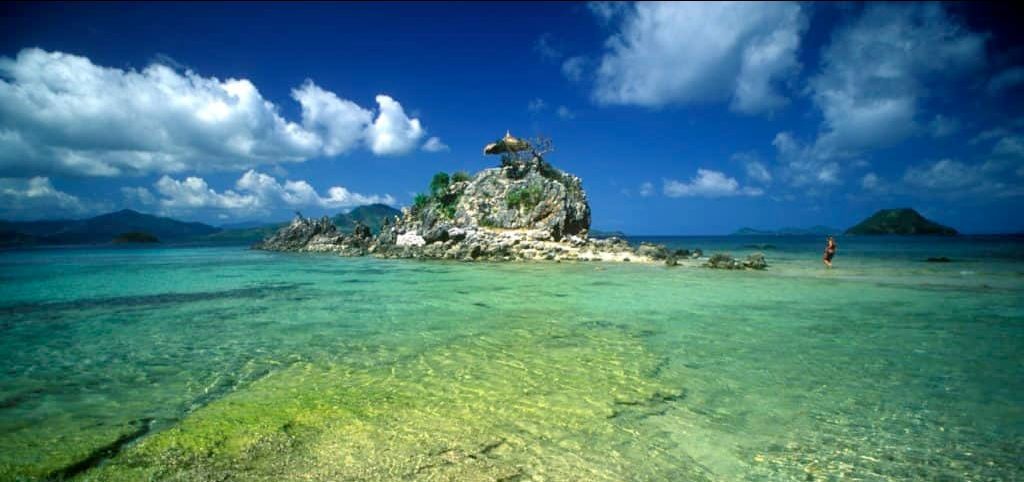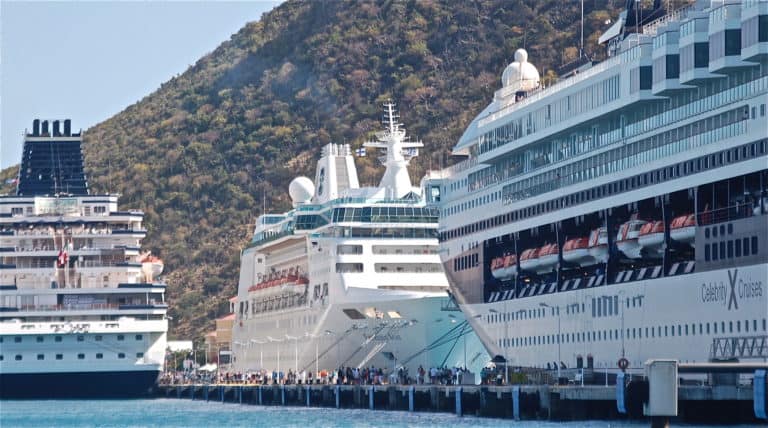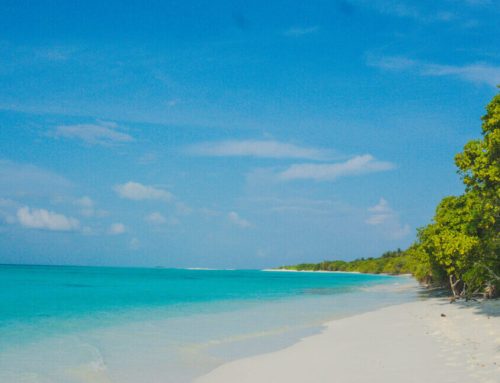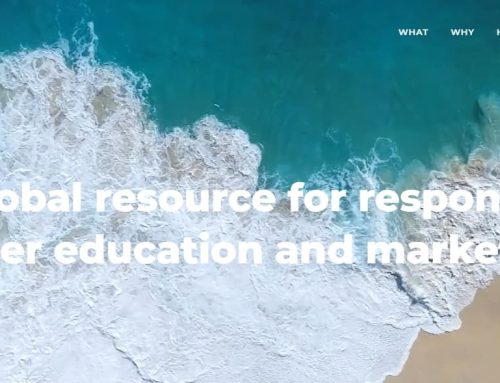Destination Stewardship Report – Autumn 2022 (Volume 3, Issue 2)
This post is from the Destination Stewardship Report (Autumn 2022, Volume 3, Issue 2), an e-quarterly publication that provides practical information and insights useful to anyone whose work or interests involve improving destination stewardship in a post-pandemic world.

The Mediterranean Sea is more vulnerable even than open ocean due to its confined geography. Photo: Arild Molstad
A Revealing Ocean View of Tourism
A “High Level” international Ocean Panel has come out with a blunt change-your-ways-or-else report aimed at the customary models for coastal and marine tourism. Norwegian journalist and consultant-participant Arild Molstad sums up the content and opines about its implications for any destination with a port and a coast.
A powerful call for regenerative tourism on coastal destinations

Coral reefs and one of the longest coastlines in the world make the Philippine marine environment rich in biodiversity – a draw for marine tourism crucial to the economy. [Photo courtesy of Arild Molstad]
The report doesn’t mince words, calling “the current model of coastal and marine tourism … inherently unsustainable, characterised by high levels of economic leakage, seasonality and vulnerability.” Don’t be misled by the abundance of marine references. The tourism report is not a message in a bottle from the swirling Garbage Patch somewhere out there in the Pacific.
Marine and coastal tourism represents approximately 50% of the total sector globally, including infrastructure, impact, visitation, and spending.
Considering that magnitude, the report should be seen as much more than a critical view from somebody just “…sittin’ at the dock of the bay/ watchin’ the tide roll away,” as Otis Redding sang.
Background
As a seafaring nation with one of the longest coastlines in the world, it fell to Norway to take the initiative in launching a fast-track action plan to safeguard the oceans from escalating pollution, accelerating climate change, and rapid loss of biodiversity.
Three years ago Norway’s government invited 13 countries to form a multi-sector ‘coastal coalition’ to spearhead and embrace a more sustainable, holistic approach to industries such as fishing, shipping, food production and finance. Marine-related tourism was also an obvious choice for this list: By 2030, according to the report, coastal and marine tourism will become the largest ocean economic sector.
The idea of the Ocean Panel was conceived in 2017 in a meeting between the former president of the World Resources Institute, Andrew Steer, and Norway’s Minister for Climate and Environment, Vidar Helgesen. Present at the conference was John Kerry, who has since been a strong supporter of the initiative, which was initially financed by Norway.
Headed by a “High Panel” of professionals, and with the World Resources Institute as a secretariat, the Ocean Panel subsequently brought in many tourism experts, including me. In 2019 we were all looking forward to going to work in brainstorming and problem-solving sessions on all continents. That didn’t happen.
What happened was Covid-19, triggering instead innumerable digital encounters over two years across all time zones. Confronted by the implosion of coastal tourism everywhere – we realized that the otherwise catastrophic coronavirus crisis came with some silver linings.
It would give us time to:
a) identify and diagnose structural weaknesses in the traditional tourism industry,
b) find ways to address the acute needs of nearly one million tourism workers whose future livelihoods were jeopardized, and
c) build a more sustainable tourism model for ports, bays, beaches, fjords, inlets, archipelagos, islands and coastal communities, where counting visitors as a prime measure of success must end.

John Kerry. [Photo courtesy United Nations]
A circuit breaker
The report launched at the Ocean Summit this summer put it this way: “The global pandemic… offered a circuit breaker to reflect on traditional forms of coastal and marine tourism that are no longer sustainable or viable.” The pandemic, the report stated, became a “unique and timely opportunity for bold action” that gave the industry and the public sector “a chance to change and reshape the sector” through political leadership.
I find much of the wording in the report (digesting the 12-page Executive summary is a good start) to be remarkably clear and topical, hitting most of the marks where global tourism so far has failed. In particular I welcome the use of the term regenerative, as it goes beyond ‘sustainability’ with its emphasis on ‘rebuilding and restoring damaged or depleted ecosystems, communities and traditions.’
A regenerative approach
The regenerative concept makes an important link to the threat that has been called ‘the twin brother of climate change’ – the speeding decline of global biodiversity. It also makes reference to traditions and community values, significant when many of the 50-plus marine World Heritage sites are besieged by mass tourism.
The report strongly encourages a more systemic, holistic approach to tourism in places where water meets land, from ports to all types of coastal shorelines. This struck me: Isn’t it about time that we begin to view ports as portals, that is, entry points where marine and terrestrial ecosystems, e.g. National Parks and Marine Protected Areas, communicate and connect – sustainably as well as synergistically?
When the report makes an important reference to the tourism industry’s “invisible burden” I am reminded how many of the sharpest industry experts and advisors have been at work. Their thinking appears in such summarizing assertions such as “… the economic gains from tourism are not distributed equally, with large foreign companies and tour operators typically receiving disproportional benefits. When comparing the true socio-economic impacts, the costs of attracting and retaining mass tourism arrivals often outweigh the benefits.”
A transformation needed
The report calls for a transformation of tourism. Existing financial and incentive structures will need to be revised, requiring innovative financial mechanisms to ensure a just transition. The economic damage of the pandemic to tourism-dependent destinations calls for new funding packages, fiscal policies, and non-traditional lending arrangements. As examples, the report describes user and entry fees, conservation and environment taxes, concession fees, plus the use of “blue bonds” and conservation trust funds, lease arrangements and protected area charges. Such a paradigm shift will require investments and monetary stimuli.
What the High Panel calls the “the underutilisation of tourist fees” can represent a vast source of revenue for conservation initiatives to strengthen resource management and help raise revenues locally.

Large cruise ships such as these in St. Maarten will face more restrictions in countries such as Norway, which plans to protect its fjord ecosystems from megaship pollution. [Photo: Jonathan Tourtellot]
New series of work sessions planned
In Norway, the nation’s 2017 “Road Map to Sustainable Tourism” will likely be revised and updated. Since the nation remains a major financing source for the Ocean Panel, its prime minister will co-lead upcoming High Panel meetings.
Will the report trigger enough courage and resources to transform a tourism industry ripe for reform? Or will “build back better” recede into merely “build back” – the way Otis Redding’s song ends: “Nothin’s gonna change/ everything still remains the same”?
If so, an enormous amount of wisdom and energy has been misspent.
*Full title: “Opportunities for Transforming Coastal and Marine Tourism” Towards Sustainability, Regeneration and Resilience.] An excellent 12-page Executive Summary report is available, giving an overview of the core messages in 132 pages report (which would have benefited greatly from a more thoughtful selection of photos, with captions, to illustrate and underscore more of the cases covered in the main text). The report is accompanied by a collection of Expert Perspectives on how to enact the shift to a sustainable, more equitable tourism sector, across the value chain.
**This year the US, France and the UK came on board, joining Norway, Australia, Ghana, Canada, Chile, Fiji, Mexico, Indonesia, Palau, Kenya, Namibia, Japan, Portugal, Jamaica. All 17 nations met this June in Portugal at the pandemic-postponed (twice) Ocean Summit.
About the Author
Arild Molstad is the author of several acclaimed books, hundreds of articles. He is also a photographer, film-maker, and an internationally recognized conservation and tourism expert.




